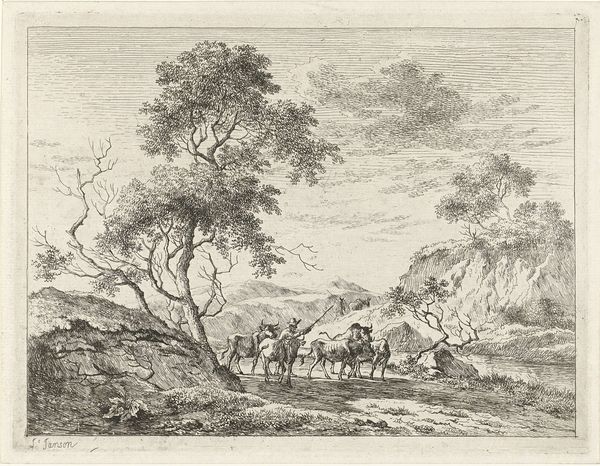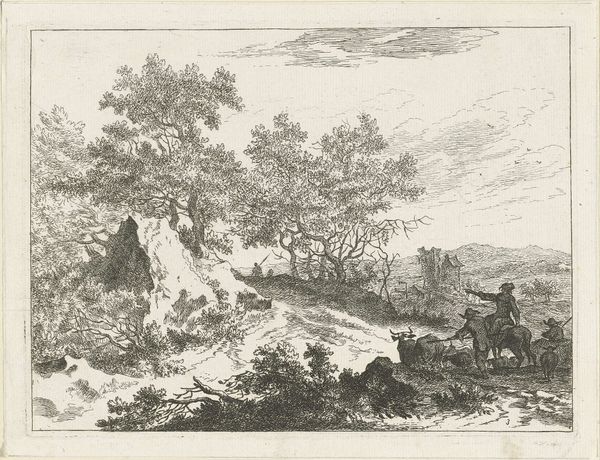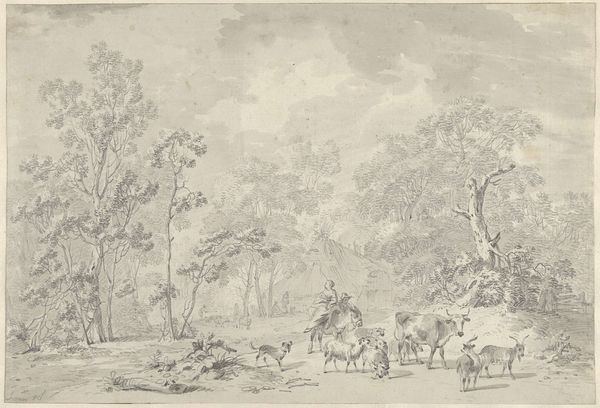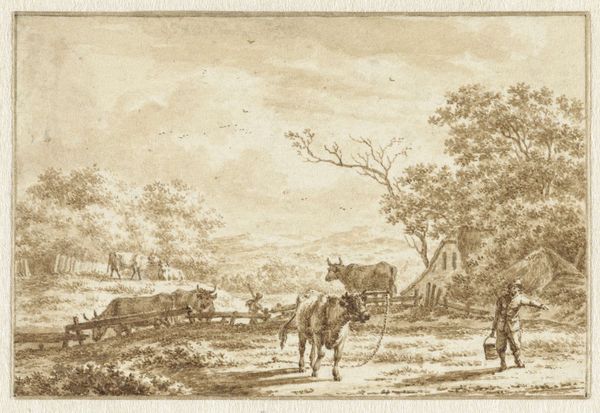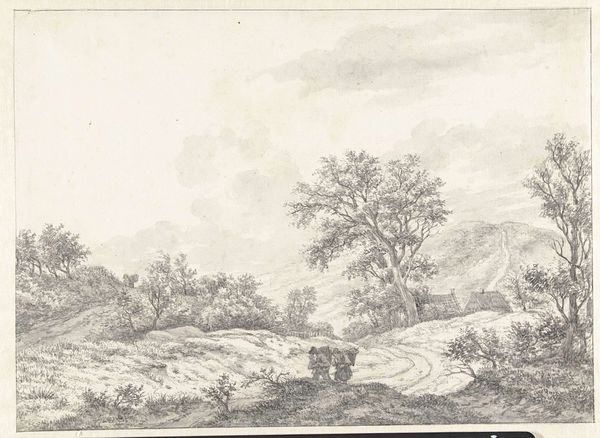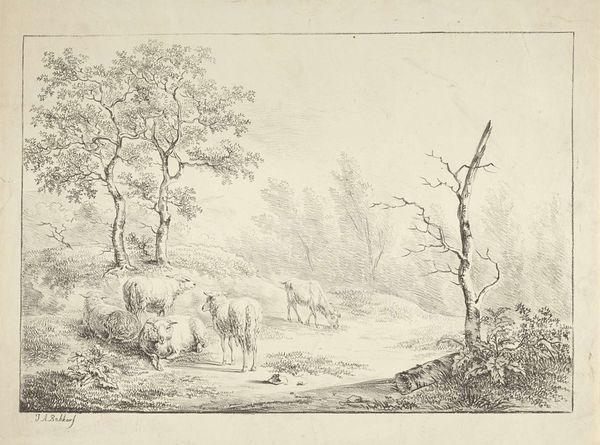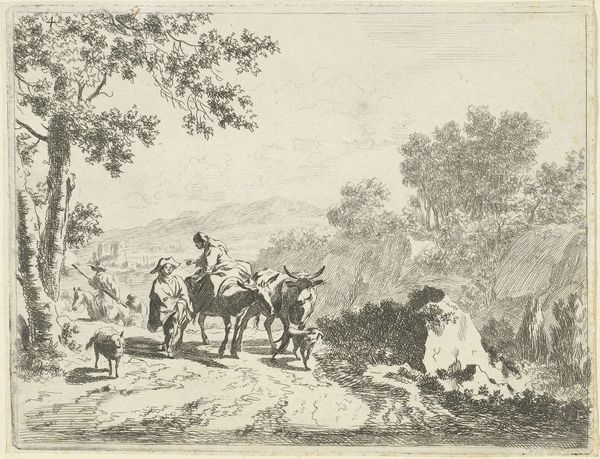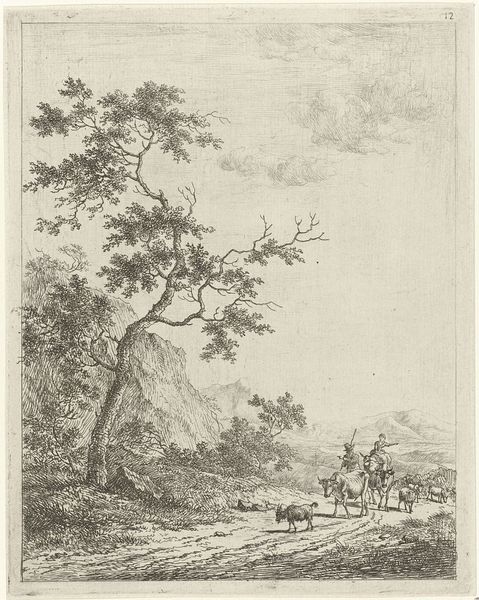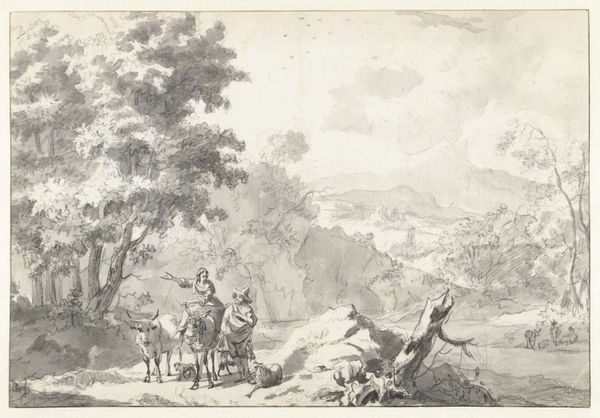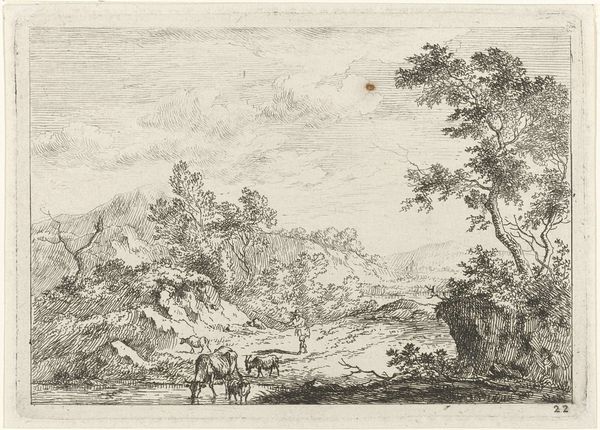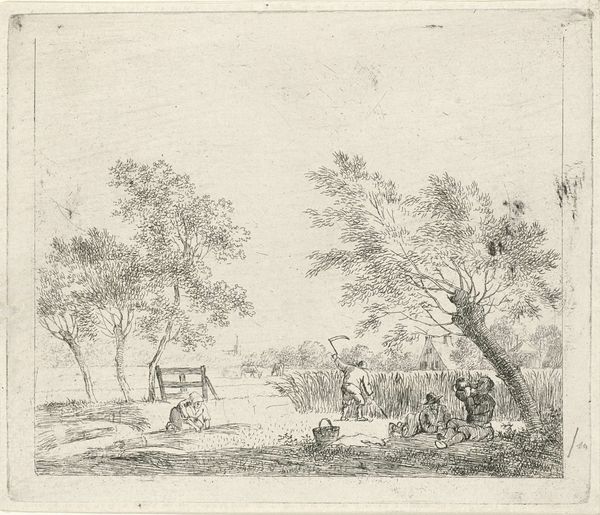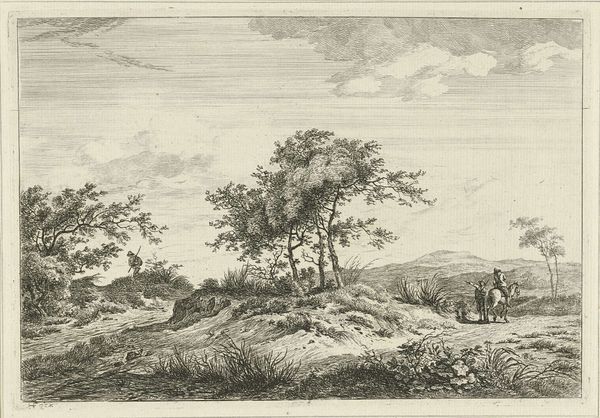
Dimensions: height 107 mm, width 149 mm
Copyright: Rijks Museum: Open Domain
Editor: Here we have "Mountainous Landscape with Shepherd and Cattle" by Johannes Janson, created sometime between 1761 and 1784, it's an etching. It feels like a snapshot of rural life, a really idyllic scene. What story does this landscape tell, in your opinion? Curator: This piece is quite interesting when viewed through the lens of its time. The late 18th century saw a rising interest in depictions of nature, fueled in part by Enlightenment ideals and the growth of landscape painting as an acceptable subject. This etching, with its emphasis on the shepherd and his livestock within a vast mountainous setting, idealizes rural life and reflects a societal longing for a simpler existence, one perceived as untainted by urbanization. What do you notice about the way the artist uses line and composition? Editor: It’s almost… nostalgic? I mean, the way everything is so neatly arranged, and the line work feels so delicate. It makes me wonder, was this ‘simple’ life really as uncomplicated as the artwork suggests? Curator: Exactly! And that’s where considering the social and political context becomes important. Representations like this served a function, shaping perceptions of rural life, even obscuring its harsh realities for many. It prompts us to think critically about the power of imagery to construct narratives and reinforce certain social values. How do you think museums play into perpetuating this view of "idylic" history? Editor: It’s definitely given me something to consider – the social forces that shaped how we perceive rural life. It changes how I appreciate the print, really. Curator: It’s all about understanding art as a product of, and a contributor to, the historical narrative. I leave seeing these romanticist landscapes with wanting to find how ordinary folks were actually represented back then.
Comments
No comments
Be the first to comment and join the conversation on the ultimate creative platform.
